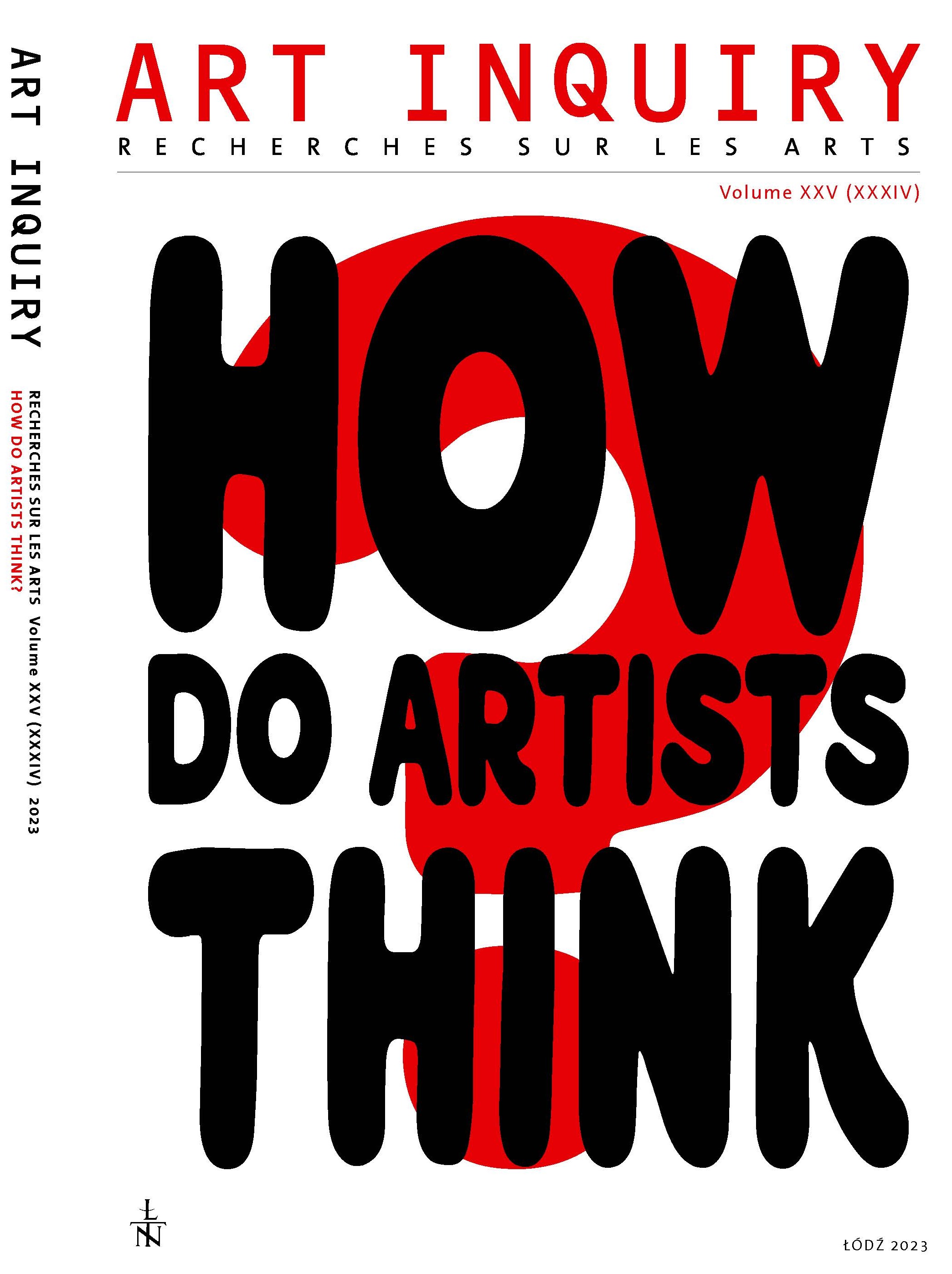Myślenie krajobrazu w sztuce
DOI:
https://doi.org/10.26485/AI/2023/25/11Słowa kluczowe:
fenomenologia, krajobraz, malarstwo, sztuka, SztabińskiAbstrakt
Celem artykułu jest analiza współczesnego malarstwa pejzażowego jako odmiany sztuki krajobrazowej na przykładzie twórczości Grzegorza Sztabińskiego. Sztuka pejzażowa jest zdefiniowana jako sztuka, która w dowolnym medium i w dowolny sposób problematyzuje ideę krajobrazu jak również rzeczywiste krajobrazy. Autor twierdzi, że współczesne malarstwo krajobrazowe może być potraktowane jako teoria czy też filozofia krajobrazu wyrażona w malarskim medium. Współczesne malarstwo krajobrazowe czyni bowiem widzialnym to, co niewidzialne, czyli pokazuje, w jaki sposób świat konstytuuje się jako znaczący dla ludzi. Czyni zaś to nie tyle ukazując widoki konkretnych miejsc, ile raczej prowokując pytania, każące się zastanowić nad tym, czym jest krajobraz.
Bibliografia
Casey Edward S. (2002) Representing Place. Landscape Paintings and Maps, Minneapolis: Min¬nesota University Press, 2002.
Casey Edward S. (2005) Earth-Mapping. Artists Reshaping the World, Minneapolis: University of Minnesota Press.
Daniels Stephen, Cosgrove Denis E. (1988) Introduction. Iconography and landscape, [in:] Iconography and Landscape. Essays on the Symbolic Representation, Design, and Use of Past Environments, eds. S. Daniels, D. E. Cosgrove, Cambridge University Press, Cambridge 1988, pp. 1-10.
Frydryczak Beata, Salwa Mateusz (2021) Landscape art – a new definition and new look, "Art Inquiry", vol. XXIII (XXXXII), pp. 113-123.
Ingold Tim (1993) The Temporality of the Landscape, "World Archaeology", vol. 25, no. 2, pp. 152-174.
Jakob Michael (2009) Il paesaggio. Bologna: il Mulino.
Merleau-Ponty Maurice (1964) Eye and Mind, transl. by C. Dallery, [in:] M. Merleau-Ponty, The Primacy of Perception, ed. J. M. Edie. Evanston: Northwerstern University Press, pp. 153-190.
Salwa Mateusz (2023) Pejzaż w cudzysłowie – Grzegorza Sztabińskiego refleksja wizualna, [in:] Myślenie estetyczne, eds T. Pękala, R. Kubicki. Lublin: Wydawnictwo UMCS, pp. 189-200.
Strauss Erwin (1963) The Primary World of Senses, transl. by J. Needlman. London: Collier-MacMillan.
Sztabiński Grzegorz (2004) Dlaczego geometria? Problemy współczesnej sztuki geometrycznej, Łódź: Wydawnictwa Uniwersytetu Łódzkiego.
Sztabiński Grzegorz (2007) Retrospekcja, exh. cat. Łódź: Miejska Galeria Sztuki w Łodzi.
Sztabiński Grzegorz (2011) Dokumentacja a horyzontalny sposób pojmowania twórczości artystycznej, "Sztuka i Dokumentacja", no. 5, pp. 6-15.
Sztabiński Grzegorz (2012) Tautologie konceptualistyczne. "Sztuka i Dokumentacja", no. 6, pp. 89-95.
Tuan Yi-Fu (1979) Thought and Landscape, [in:] The Interpretation of Ordinary Landscapes: Geographical Essays, eds. D. W. Meinig, J. B. Jackson, Oxford: Oxford University Press, pp. 89-102.
Williams Raymond (1973). The Country and the City, New York: Oxford University Press.
Pobrania
Opublikowane
Numer
Dział
Licencja

Utwór dostępny jest na licencji Creative Commons Uznanie autorstwa – Użycie niekomercyjne – Bez utworów zależnych 4.0 Międzynarodowe.





